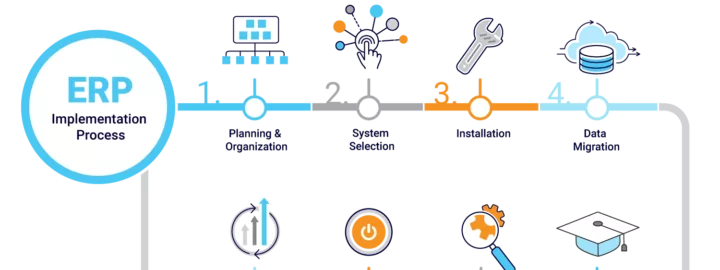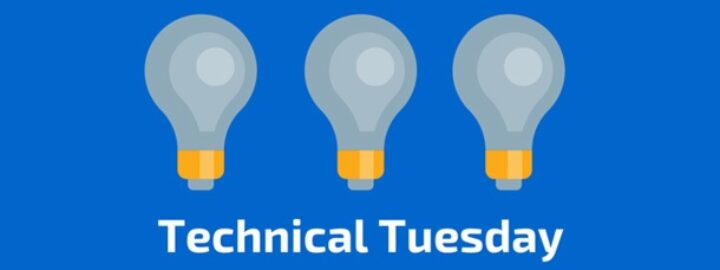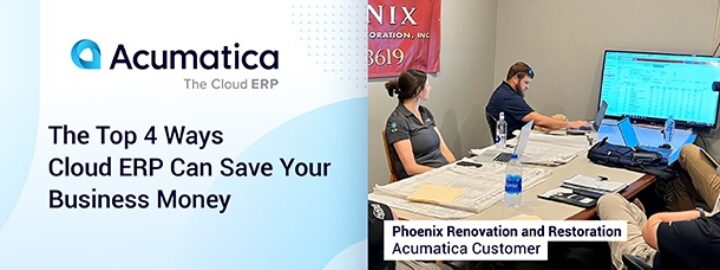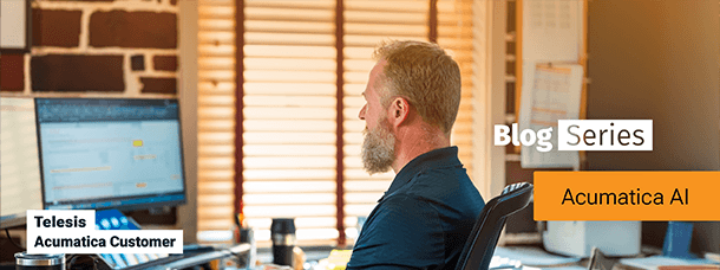Reviewed: Nov, 2023
In this article:
Researching ERP Pricing
Putting Together Your ERP Budget
Aligning Stakeholders and Teams
How can Acumatica Help?
Researching ERP Pricing
If you’re considering replacing your multiple, disconnected, and inefficient systems with a modern, comprehensive, and effective ERP solution, you’re likely wondering, is ERP expensive and what is ERP pricing? These are important questions, but before they can be answered, you should first know exactly what an ERP does in order to understand its potential worth.
Simply put, an ERP solution replaces multiple, disconnected systems. It links all areas of a business and typically includes accounting, financial, CRM, supply chain, inventory, and manufacturing applications (and more). Such a single-system solution collects, stores, and synchronizes data, making information accessible to everyone in an organization in real time. It also streamlines business processes, promotes data-rich strategies, and increases overall efficiency. You’ve probably read these points before if you’re researching ERP prices.
As to whether an ERP is expensive, a general search for ERP pricing—or, more precisely, for ERP implementation pricing—will return some good estimates. Based on data from 1,338 ERP projects, Software Path research says an ERP implementation will cost, on average, $8,265 per user. (Quick note: Acumatica does not charge per user.)
This price may or may not be true for your business, but it does show what to expect as you contemplate an ERP budget.
ERP Pricing: Putting Together Your ERP Budget
There are various factors to consider when creating an ERP budget, many of which are common no matter what system you choose. You’ll need to think about:
- The available licensing options.
- The number of people who will be using your ERP system. (Again, Acumatica does not charge per user.)
- The number of companies and locations you will be connecting with the ERP system.
- The complexity of your business processes.
- The employee training required to use the ERP system.
- Your industry.
- Your customization needs.
- Your data conversion/migration requirements.
- Your projected consumption volume.
- How many third-party applications you need and how complex they are.
- How frequently the ERP vendor publishes updates and upgrades.
Prices will vary, but you can generally expect ERP implementation services to cost about 1.5 to 2.5 times the base cost of the software.

ERP Pricing: Finding the Right Licensing Model
Licensing will be one of the biggest costs to your organization. In the ERP context, there are two licensing forms: perpetual and subscription.
Perpetual (or private cloud) licensing charges a one-time fee for the ERP system. This model is designed for businesses that choose a private or self-managed solution. They pay upfront for the hardware and software and are responsible for security, maintenance, and upgrades (which means they need IT experts on staff). An annual maintenance fee for upgrades is also expected.
A SaaS (Software as a Service) subscription plan is designed for companies that choose cloud ERP software. This monthly or annual subscription gives businesses access to the software, which the ERP vendor hosts and maintains on a third-party server. ERP vendors also include upgrades in their SaaS subscriptions. This means that a company’s IT department can focus on more forward-looking projects—or that an IT department may not be necessary at all.
There are pros and cons to both licensing options. Do you want to have the hardware in your building with an IT department to manage it, or would you rather eliminate those costs? What are the tax advantages of capital vs. operating expenses? Can you pay a one-time, large, upfront cost, or do ongoing, monthly payments better fit your business? What is the total cost of ownership over the product’s lifetime?
ERP Pricing: Aligning Stakeholders and Teams
Answering these questions will help you move forward with your budget, but that momentum may be checked if your stakeholders and team members aren’t onboard. Sean Chatterjee, the VP of Partner Sales at Acumatica, writes about this in How to Get Organizational Buy-In for Your ERP Implementation (and Why It Matters). He says getting leadership support for an ERP investment is the first critical step, followed closely by gaining organizational support.
“Just as you convinced the leadership team, you’ll now need to convince your team members that new technology will benefit them and the company. Unfortunately, many employees may feel the disruption to their daily activities and workflows by the implementing and learning of an ERP system (one that may or may not make them more efficient) isn’t the right decision. It’s in your company’s best interest to address these concerns immediately. Organizational buy-in (or the lack thereof) can make or break your ERP implementation. If employees refuse to use the new system or only use it half-heartedly, your company cannot reap the rewards brought by automating your business management processes.”
To get organizational buy-in, Sean recommends telling your team about:
- The plan to implement a modern cloud ERP system.
- The system’s benefits and features.
- The leadership support behind the project.
Having your entire team invested in your ERP implementation is key to its success.
How Acumatica Can Help
Now that you have a good idea of costs and what factors to consider, it’s time to take your ERP price research process one step further by applying your knowledge to a specific cloud ERP solution.
We aren’t directly addressing “how to choose ERP solutions” today, but we believe Acumatica Cloud ERP should be on your shortlist. Our award-winning, comprehensive cloud ERP software is built on an open platform. It delivers value through integrated workflows across our full suite of business management applications, including CRM, Financials, Field Service, Project Accounting, and Inventory Management. We also provide industry-specific solutions, such as our Construction, Retail, Distribution, and Manufacturing Editions.
In addition to leading-edge technology, best-in-class functionality, and customer-friendly business practices, we offer a unique pricing structure, making our cloud-based ERP solution affordable for small- and mid-sized businesses. Unlike most ERP providers, Acumatica does not charge according to the number of users. We charge only for the functionality you need—the resources and features you actually use. Add as many users, suppliers, and customers as necessary without paying for additional licenses. As your company grows, Acumatica will grow with you.
To learn more about Acumatica’s cloud ERP software and pricing, contact our experts today.













